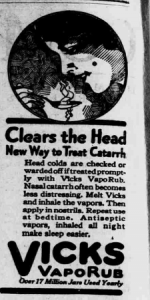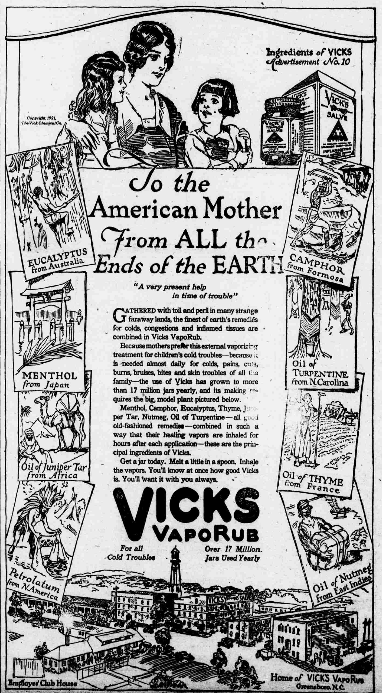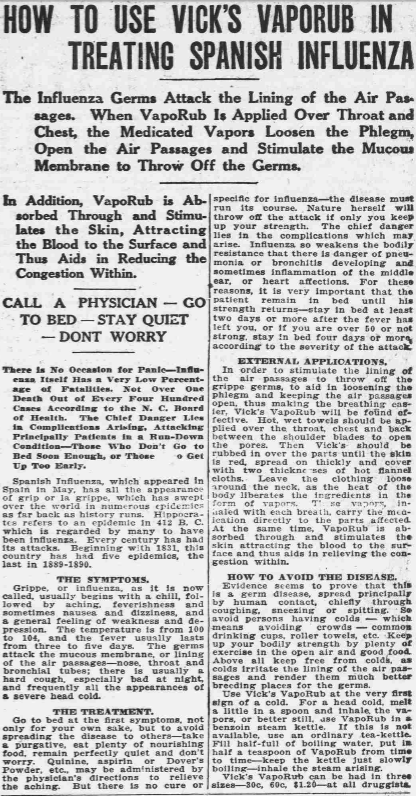Nineteenth century newspapers advertised a host of treatments for illnesses, including one called catarrh. The term is one rarely used today, but in the 19th century catarrh referred to an excess of phlegm or mucous. Although nasal or sinus congestion is frequently caused by fever or allergies, it also accompanies pneumonia or other afflictions of the immune system that were often deadly during that time period.
Among the products promoted for treatment of catarrh was one from North Carolina—Vicks VapoRub.

The Vicks brand was created by pharmacist Lunsford Richardson in Greensboro in the early 1890s.
There are several stories offered for why Richardson chose the name Vicks. Some suggest that Richardson considered putting his own name on the product, but then rejected the idea because his name didn’t fit on the label. Others say that Richardson chose Vicks to honor his brother-in-law, Dr. Joshua Vick. Vick was a respected and highly in-demand physician in Selma, N.C. He turned to Richardson, who had a love for chemistry, for help with dispensing medicine. Another account suggests that Richardson borrowed the name from a seed catalog with a listing for Vick Seed Co.
In the 1890s, twenty-one home remedies were patented and sold under the Vicks name. Each of these claimed natural ingredients, including nutmeg, thyme, camphor, and eucalyptus oils, imported from around the world. Many newspapers routinely published ads for Vicks tonics and ointments similar to the one shown below from The Watauga Democrat.

The best-selling Vicks product was a salve that Richardson created for croup, a product that he marketed as Vicks Croup and Pneumonia Salve. The ointment included menthol.

The operation became Vicks Chemical Company in 1911. At that time, Lunsford Richardson’s son Henry Smith Richardson suggested renaming the product Vicks VapoRub. The company advertised the product as “the remedy of over 100 uses.”
With the Spanish flu pandemic in 1918, the popularity of VapoRub skyrocketed in the U.S. Sales climbed from $900,000 to $2.9 million from 1918 to 1919. Advertisements provided detailed instructions for using Vicks to fight the flu.

Richardson’s company is today a part of Proctor and Gamble, but the Vicks brand remains. VapoRub, in its familiar blue jar, continues to be sold around the world, with users claiming the salve is a cure-all for countless maladies, including sunburn, toenail fungus, cough, warts, chapped lips, dandruff and mosquito bites. The records of Richardson-Vicks Inc. and the papers of Henry Smith Richardson are available in Wilson Library’s Southern Historical Collection.
